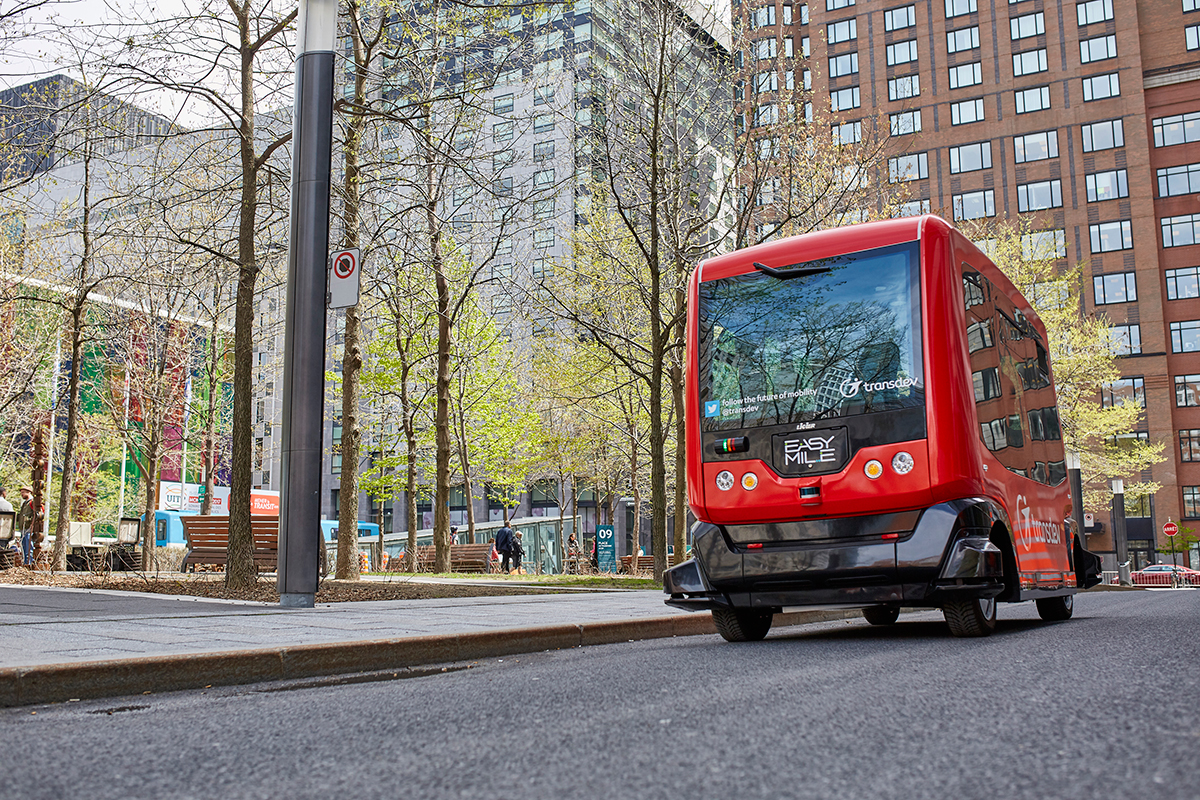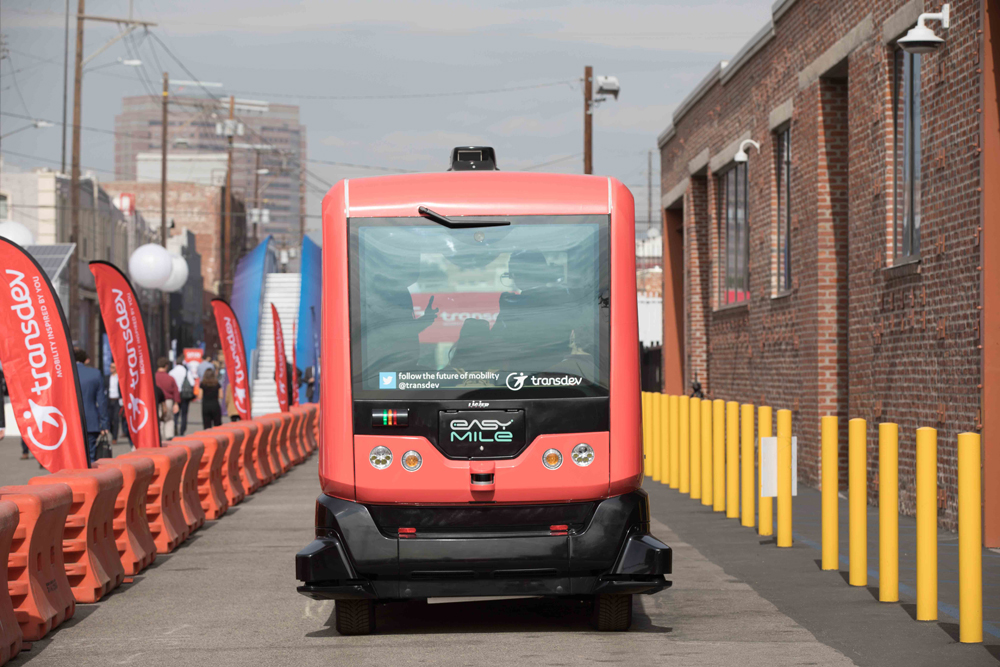
Tomorrow’s Mobility will be P.A.C.E.
mars 5, 2018 — Uncategorized
Since the middle of the twentieth century, private cars have been regarded as the symbol of freedom. As a social marker and a symbol of a rapidly developing consumer society, cars have made urban planning and a new way of life necessary: major multi-lane roads, large concrete-built areas, and suburban sprawl with excessive parking lots. At the same time, public transport has focused on dense urban centers, or on high-speed train networks intended to provide a direct link between the large regional capitals. In this system, private cars and public transit have worked completely separately, without interaction or integration.
The end of a model focused on the private car
Today, this development model brings us to a deadlocked situation. Congestion, air and noise pollution, disfigurement of the landscape, depletion of fossil fuel resources, lack of equity created by transportation deserts: the prevalence and the popularity experienced by private cars for several years have limited other transportation choices. Reconsidering the role of the car is therefore a must. But mobility tools as a whole must be redefined. Diversified and sustainable means of individual travel need to be part of a renewed public transport offering. Moreover, the boundary between individual and public transport is now blurring: carpooling on the one hand and on-demand public transport on the other. The passengers need to be central in efforts to enhance mobility. Mobility as a Service (MaaS) must be the new goal for modern transportation operators. To do this, modes of transportation must be varied, seamless, connected, and designed to be fully integrated.
P.A.C.E., an acronym for emerging transport
At Transdev, we believe that the future of mobility will be P.A.C.E. – increasingly more personalized, autonomous, connected and electric. In a more personalized future, the user is free to choose the best service from a range of transport offers. To do so, passengers must be empowered with reliable information, in real time, so they can assess the optimal solution for their needs. Transdev Link is our first and last mile app and platform, which helps users to bridge this traditional transit gap. This on-demand transport solution can be achieved by many relevant modes of transportation.
This may involve autonomous vehicles, another option in the new reality of mobility. Several types of autonomous vehicles will add to our capabilities and help ensure 24×7 services at a lower cost, which will allow new areas to be served. Transdev already carries 3,000 passengers per day in the United States, France, Australia and the Netherlands in this manner. Transdev will soon launch, in Babcock Ranch (near Fort Myers, Florida), the country’s first network of autonomous shuttles, offering its MaaS solutions to 50,000 residents. In the same spirit, in the city of Rouen (France), the company will offer an on-demand mobility service provided by self-reliant electric vehicles using public roads. The objective: creating better connections to public transportation in areas that have traditionally been underserved.
Generally, the integration between the different transportation modes is possible through seamless connections to diverse offers. Passengers need the fastest and highest-quality door-to-door journeys. Multi-modal transportation networks provide users with relevant and timely information to inform their trips. Digital mobility apps also help passengers navigate public transport networks thanks to digital ticketing and access to real-time arrival information.. Better still, the Whim application deployed in Finland allows users to plan a trip accessing all the available modes of transport, whether offered by the public or private sector. It provides passengers with the ability to manage reservations and enables payment. It also adapts to user preferences in order to offer them a solution that best meets their expectations.
Of course, all this would not be sufficient without ensuring that fleets are green, sustainable generally electrical, or powered by biogas or hydrogen. Tomorrow’s transport must be developed with a limited impact on the environment in mind. Transdev has started to commission 100 all-electric buses in the suburbs of Amsterdam, and 50 others or so in Eindhoven, with the distinct feature of being able to recharge at night, as well as on the route. The numbers of buses which will undoubtedly grow in the Netherlands and other countries. Deployments of electric buses will certainly increase in France, with ongoing projects in the Ile de France region, in Nantes or even in Nice.

Including Passenger and Community Input
New mobility, new settings! Street furniture must be redesigned in order to make transport popular. There again, users must have their say. New-generation street furniture tends to be aesthetically pleasing and innovative and typically ensures the contribution of citizens, designers and artists. Beyond the passengers’ basic expectations, which include comfort, punctuality and cleanliness, it is necessary to integrate an emotional dimension; to minimize any potential public transport related anxiety and fatigue. Transdev conducts audits to measure its customers’ satisfaction at each step of the journey. The objective is detecting all of the elements likely to slow the use of public transport and to engage in a plan of corrective and incentive actions.
An important aspect of this policy is rethinking transport infrastructures. It can, indeed, become part of the neighbourhood, with a co-construction of spaces and mobility networks with the passengers and with the opening of some elements to the population. This is the example of the Lemon programme, the mobility experimentation laboratory for the Grenoble region. Using actual photos of the neighbourhood, the “Unlimited cities” touch-sensitive application enables the community to see the potential developments related to public transport and suggest new options and equipment. The result was a very popular new transfer hub combining wood, vegetation and digital technology, creating a giant connected bench designed by the ENSAG School of Architecture of Grenoble. Another benefit was a renewed partnership with the neighbourhood’s cultural sites and sporting venues and greatly enhanced signage that focussed on the desirable destinations in the neighbourhood. When users participate in the development of their network, their vision of public transport changes. The success of tomorrow’s mobility is also depending on these novel approaches.